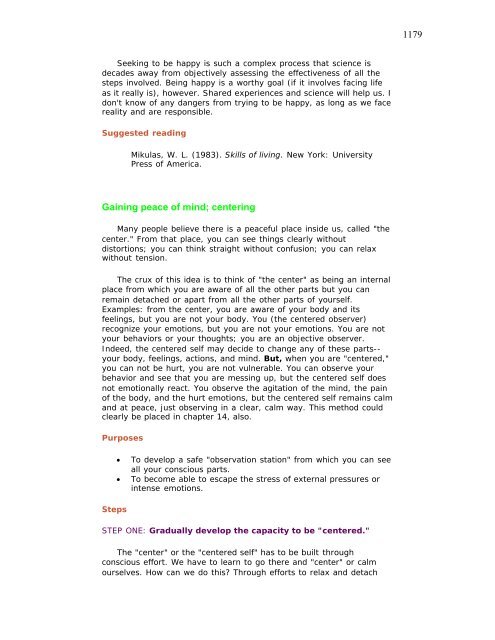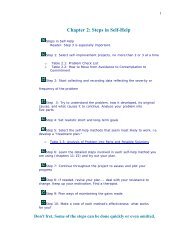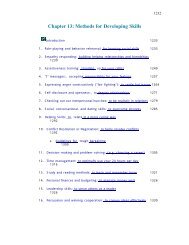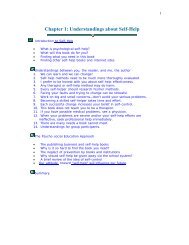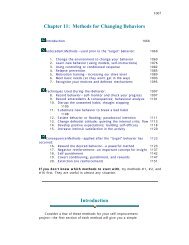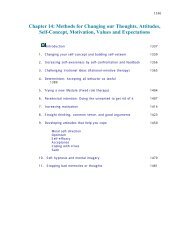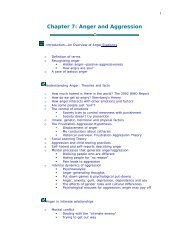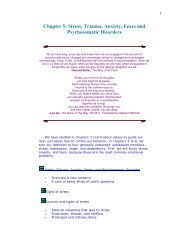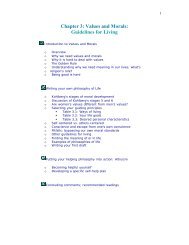Chapter 12: Methods for Changing Emotions - Psychological Self-Help
Chapter 12: Methods for Changing Emotions - Psychological Self-Help
Chapter 12: Methods for Changing Emotions - Psychological Self-Help
Create successful ePaper yourself
Turn your PDF publications into a flip-book with our unique Google optimized e-Paper software.
1179<br />
Seeking to be happy is such a complex process that science is<br />
decades away from objectively assessing the effectiveness of all the<br />
steps involved. Being happy is a worthy goal (if it involves facing life<br />
as it really is), however. Shared experiences and science will help us. I<br />
don't know of any dangers from trying to be happy, as long as we face<br />
reality and are responsible.<br />
Suggested reading<br />
Mikulas, W. L. (1983). Skills of living. New York: University<br />
Press of America.<br />
Gaining peace of mind; centering<br />
Many people believe there is a peaceful place inside us, called "the<br />
center." From that place, you can see things clearly without<br />
distortions; you can think straight without confusion; you can relax<br />
without tension.<br />
The crux of this idea is to think of "the center" as being an internal<br />
place from which you are aware of all the other parts but you can<br />
remain detached or apart from all the other parts of yourself.<br />
Examples: from the center, you are aware of your body and its<br />
feelings, but you are not your body. You (the centered observer)<br />
recognize your emotions, but you are not your emotions. You are not<br />
your behaviors or your thoughts; you are an objective observer.<br />
Indeed, the centered self may decide to change any of these parts--<br />
your body, feelings, actions, and mind. But, when you are "centered,"<br />
you can not be hurt, you are not vulnerable. You can observe your<br />
behavior and see that you are messing up, but the centered self does<br />
not emotionally react. You observe the agitation of the mind, the pain<br />
of the body, and the hurt emotions, but the centered self remains calm<br />
and at peace, just observing in a clear, calm way. This method could<br />
clearly be placed in chapter 14, also.<br />
Purposes<br />
Steps<br />
· To develop a safe "observation station" from which you can see<br />
all your conscious parts.<br />
· To become able to escape the stress of external pressures or<br />
intense emotions.<br />
STEP ONE: Gradually develop the capacity to be "centered."<br />
The "center" or the "centered self" has to be built through<br />
conscious ef<strong>for</strong>t. We have to learn to go there and "center" or calm<br />
ourselves. How can we do this? Through ef<strong>for</strong>ts to relax and detach


